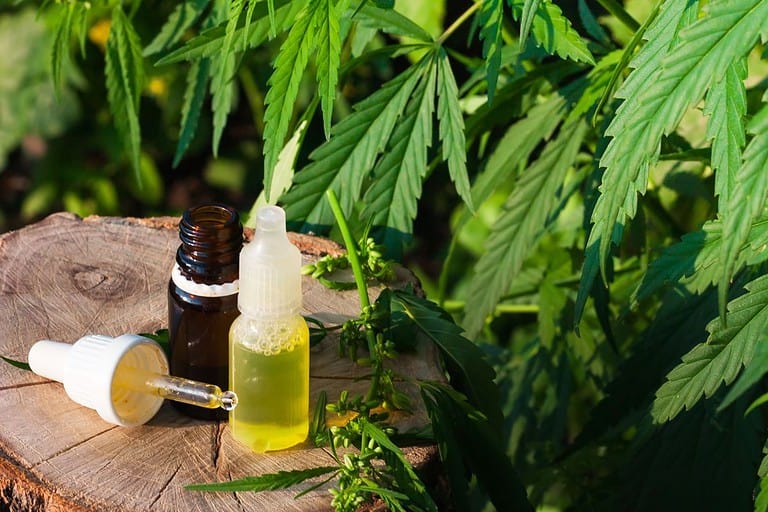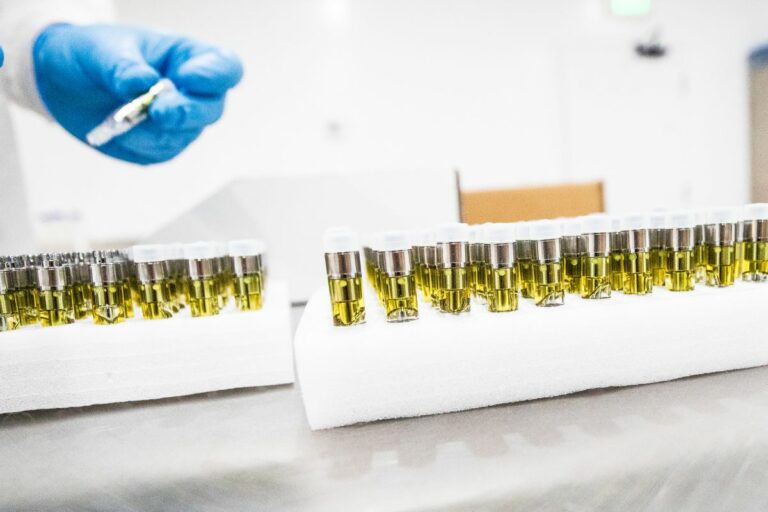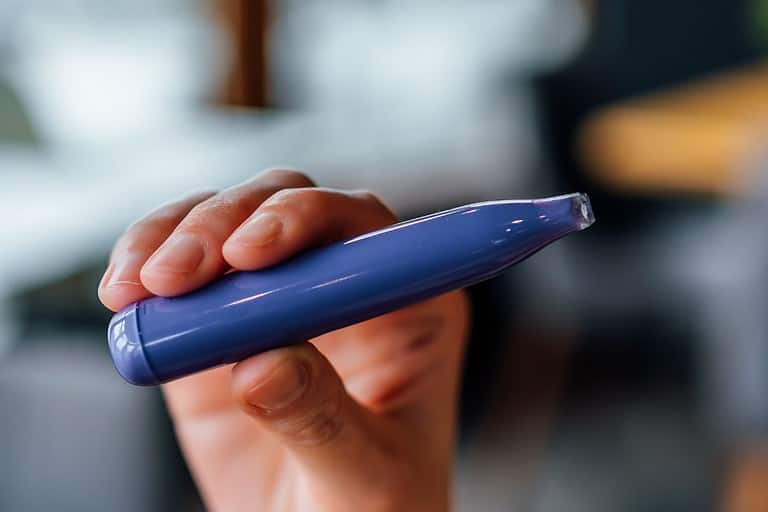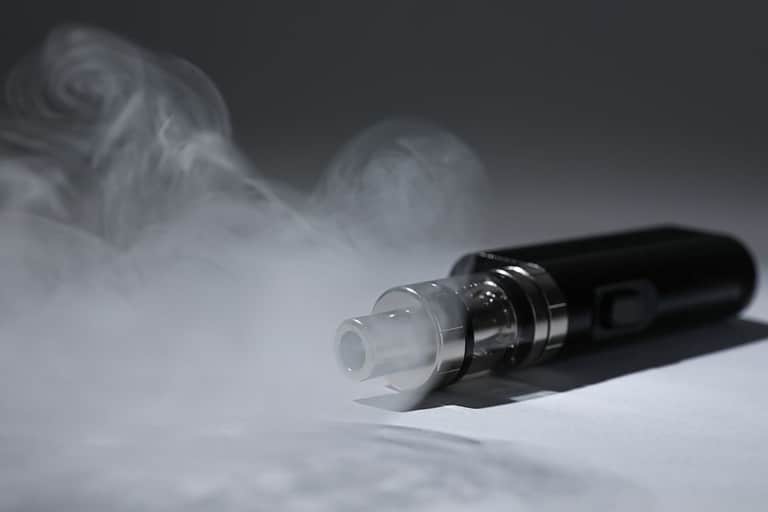Understanding PG Allergy Symptoms – The Signs and What To Do
PG allergy symptoms can be both mild and severe, and if you’re not familiar with them, they can be confusing. In this blog post, we’ll explore the signs of a PG allergy and what to do if you think you may have one. Topic: The Five Stages of Grief and How To Cope Intro: The five stages of grief are denial, anger, bargaining, depression, and acceptance. While it is often said that these stages must be experienced in order, they do not always happen in linear fashion. In this blog post, we will explore each stage of grief in more detail and offer coping mechanisms for each.
Table of Contents
What is Propylene Glycol?
Propylene glycol is a synthetic liquid substance that absorbs water. It is often used as a food additive or ingredient in cosmetics, medicines, and tobacco products. In the United States, it is recognized as safe by the Food and Drug Administration (FDA) and is used in many products, including food coloring and flavorings, cigarettes, and e-cigarettes. But for some people, propylene glycol can cause an allergic reaction.
Allergies to propylene glycol are rare, but they can occur. Symptoms of an allergy to propylene glycol can include skin irritation, hives, and swelling. More serious reactions are rare but can include difficulty breathing and low blood pressure. If you think you may be allergic to propylene glycol, talk to your doctor. They can help you determine if your symptoms are indeed caused by an allergy and recommend treatment options.
NEW CUSTOMER DISCOUNT
Save 15%
15% OFF YOUR ENTIRE ORDER FOR NEW CUSTOMERS USE CODE WELCOME15!
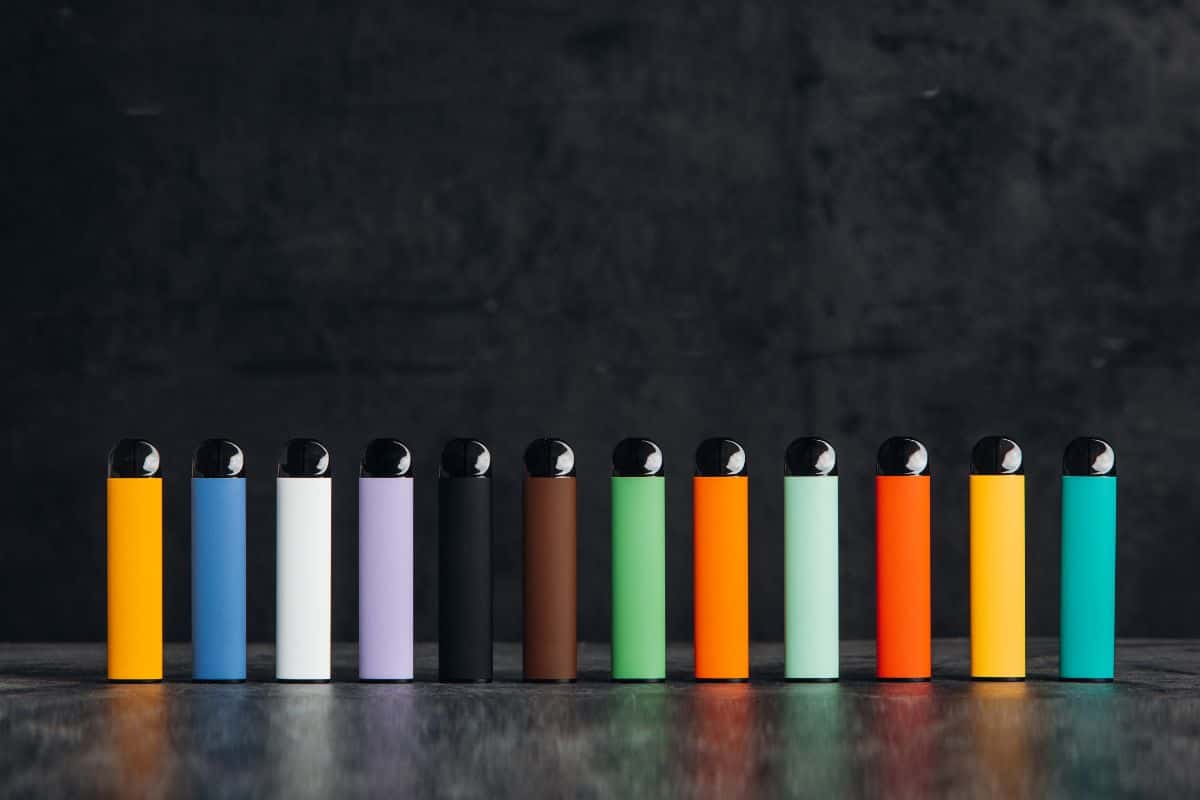
Why is PG Used in Eliquids?
PG is short for propylene glycol, and it’s a common ingredient in many products, including food, cosmetics, and medications. It’s also the main ingredient in most e-liquids.
PG is included in e-liquid as a carrying agent for the flavorings and nicotine. It helps to create the vapor when you vape and also provides a Throat Hit. Many people who switch from smoking to vaping find that they prefer e-liquids with a higher PG content because it more closely resembles the sensation of smoking.
However, some people are allergic to PG or have sensitivities to it. Allergic reactions can range from mild (itchy eyes or throat) to severe (trouble breathing, hives, or swelling). If you experience any of these symptoms after using an e-liquid with PG, you should stop using it immediately and see a doctor if necessary.
There are plenty of e-liquids available that are 100% VG (vegetable glycerin), so you can still enjoy vaping even if you’re allergic to PG. Just be sure to check the labels before you buy!
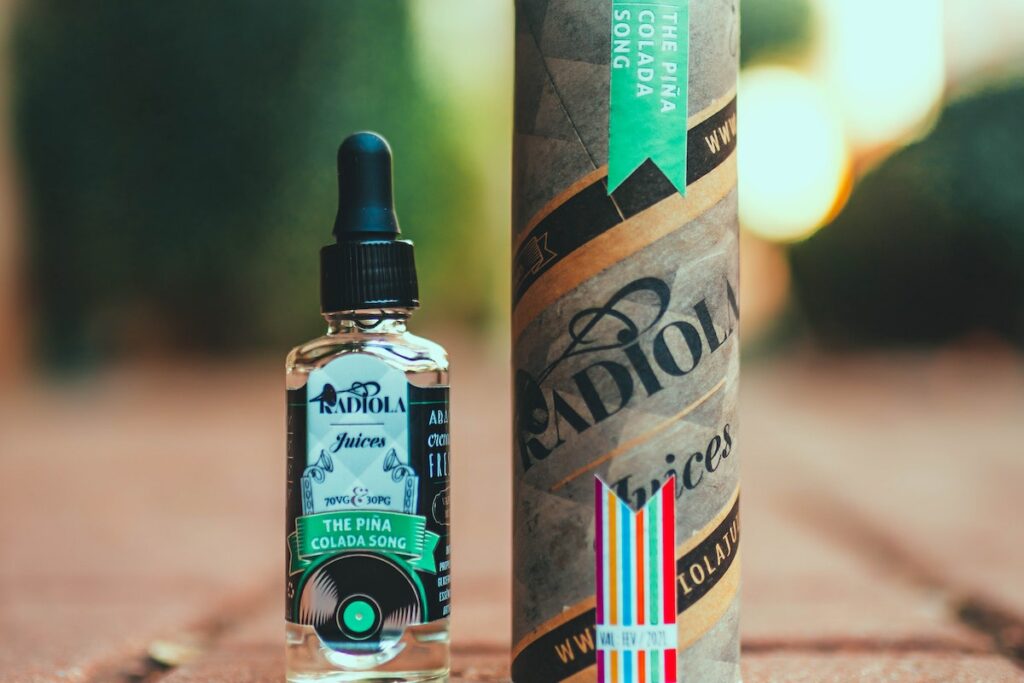
PG Sensitivity or just the ‘Smokers Flu’?
Recently, a lot of people who use vaping as a way to quit smoking have been reporting that they’re experiencing allergy-like symptoms. This has led to a lot of confusion and many people are wondering if they’re actually allergic to the PG in their e-liquid or if they’re just experiencing the “smokers flu.”
So, what’s the difference between PG sensitivity and the smokers flu? Well, PG sensitivity usually manifests itself as itchiness or redness around the mouth and throat. These symptoms can be uncomfortable, but they’re typically not severe. The smokers flu, on the other hand, is a much more serious condition that can cause fever, chills, body aches, and even difficulty breathing.
If you think you might be experiencing PG sensitivity or the smokers flu, it’s important to see a doctor so they can properly diagnose your condition. In the meantime, there are a few things you can do to help ease your symptoms. First, try using an e-liquid with a higher VG content. This will help reduce the amount of PG you’re inhaling and may help lessen your symptoms. Second, drink plenty of fluids and stay hydrated. This will help thin out mucus and make it easier for your body to expel any irritants. Finally, try using a nasal spray or inhaler to help relieve congestion and inflammation.
PG Allergy Symptoms
PG allergy symptoms can manifest in a number of ways, and they vary from person to person. The most common symptom is contact dermatitis, which appears as a red, itchy, and inflamed rash where the skin has come into contact with PG. Other symptoms include hives, swelling of the face or throat, difficulty breathing, and gastrointestinal distress. In severe cases, anaphylaxis can occur. If you experience any of these symptoms after coming into contact with PG, it’s important to seek medical attention immediately.
Dry Throat
If you have a dry throat, it is likely that you are not producing enough saliva. This can be caused by dehydration, mouth breathing, medications, smoking, or certain medical conditions. A dry throat can make it difficult to swallow, talk, or even breathe. It can also lead to a sore throat or hoarseness. If you are experiencing a dry throat, there are some things you can do to help relieve the symptoms:
– Drink plenty of fluids throughout the day to stay hydrated.
– Use a humidifier in your home or office to add moisture to the air.
– Suck on sugar-free hard candy or lozenges to stimulate saliva production.
– Avoid mouthwashes that contain alcohol as they can further contribute to dryness.
If your dry throat is severe and does not improve with self-care measures, contact your healthcare provider for evaluation and treatment.

Sore Throat
When you have a sore throat, it’s hard to know what’s causing it. Is it a cold? The flu? An allergy? Many people don’t realize that a sore throat can be a symptom of an allergy, specifically, an allergy to propylene glycol (PG).
PG is a food additive that’s used in many processed and packaged foods. It’s also found in some medications, cosmetics, and cleaning products. If you’re allergic to PG, coming into contact with it can cause symptoms like a sore throat, coughing, and difficulty breathing.
If you think you might be allergic to PG, pay attention to your body and see if you experience any of the following symptoms after eating processed or packaged foods, taking medication, or using cosmetics or cleaning products:
- Sore throat
- Coughing
- Wheezing
- Difficulty breathing
- Hives
- Itching
- Swelling
- Nausea
- Vomiting
If you experience any of these symptoms after coming into contact with PG, it’s important to see an allergist for diagnosis and treatment. An allergist can perform tests to determine if you have an allergy to PG and develop a plan to help you avoid exposure and manage your symptoms.
Swollen Gums
If you have PG allergy symptoms, one of the most common signs is swollen gums. This is usually accompanied by redness and itchiness. The swelling can be quite severe, and it may even make it difficult to eat or talk. In some cases, the gum tissue may break down and bleed.
If you suspect that you have a PG allergy, it’s important to see a doctor as soon as possible. Allergic reactions can sometimes be life-threatening, so it’s important to get medical help right away. Your doctor will likely do a skin test or blood test to confirm the allergy and then recommend treatment options.
Rashes and Skin Problems
There are many different types of rashes and skin problems that can be caused by a PG allergy. The most common symptom is a red, itchy rash. This can be accompanied by hives, swelling, or blisters. In severe cases, the skin may crack and bleed.
Other less common symptoms include dry skin, eczema, and psoriasis. If you experience any of these symptoms, it is important to see a doctor so they can properly diagnose and treat the allergy.
There are many treatments available for PG allergies, depending on the severity of the reaction. Milder reactions can often be treated with over-the-counter antihistamines or topical corticosteroids. More severe reactions may require prescription medication or even immunotherapy.
If you think you may be allergic to PG, it is important to see an allergist for proper diagnosis and treatment. Allergies can be unpredictable and dangerous, so it is always best to err on the side of caution.

Sinus Problems
The sinuses are air-filled cavities in the skull. They are located behind the eyes, nose, and cheekbones. The sinuses make mucus, which drains into the nose.
Problems with the sinuses (sinusitis) occur when they become inflamed or infected. This can happen when the lining of the sinuses becomes irritated or swollen. It can also happen if mucus does not drain properly from the sinuses.
Sinusitis is a common condition that affects millions of people each year. It can cause a stuffy or runny nose, pain and pressure in the face, a headache, and even fever. In some cases, it can lead to more serious problems such as meningitis (inflammation of the brain).
If you think you might have sinusitis, it’s important to see a doctor so that you can get treatment. Treatment may include antibiotics, anti-inflammatory drugs, or surgery.
Browse popular vape collections:
- Nicotine Disposables
- 2000 Puff Nicotine Disposable Vapes
- 2500 Puff Nicotine Disposable Vapes
- 5000 Puff Nicotine Disposable Vapes
- 6000 Puff Disposable Nicotine Vapes
- 7000 Puff Nicotine Disposable Vapes
- Disposable Vape Deals
- Best Vape Brands
- 8000 Puff Nicotine Disposable Vapes
- 9000 Puff Nicotine Disposable Vapes
- 5% Nicotine Disposable Vapes
- Rechargeable Nicotine Disposable Vapes
- Vape Coils
- Dab Wax Pens
- Dab Wax Pen Battery
- Yocan Vapes
- Vape Cases
What to do If You Have a PG Allergy or Sensitivity
If you have a PG allergy or sensitivity, the first thing you should do is see your doctor. They will be able to help you determine if you are truly allergic or just sensitive to the ingredient. If you are allergic, they will likely recommend that you avoid all products that contain PG. However, if you are only sensitive, they may suggest trying products with a lower concentration of PG or alternative ingredients.
There are a few things you can do to avoid having an allergic reaction to PG. The first is to avoid using products that contain it. This means reading labels carefully and avoiding anything that lists PG as an ingredient. If you are unsure about a product, it is always best to err on the side of caution and not use it.
Another way to avoid an allergic reaction is to dilute any product that does contain PG. This can be done by adding water or another liquid to the product before using it. This will help to reduce the concentration of PG and make it less likely to cause an allergic reaction.
If you do have an allergic reaction, the first thing you should do is stop using the product immediately. If your symptoms are severe, such as difficulty breathing or swelling, seek medical attention right away. For milder reactions, such as skin irritation, try applying a cool compress or taking an antihistamine medication like Benadryl.
Resources:
- https://www.naturallycurly.com/curlreading/curl-products/signs-you-have-a-propylene-glycol-allergy
- https://my.clevelandclinic.org/health/drugs/21223-antihistamines
- https://www.healthline.com/nutrition/vegetable-glycerin
- https://www.betterhealth.vic.gov.au/health/healthyliving/e-liquids-for-use-in-e-cigarettes


